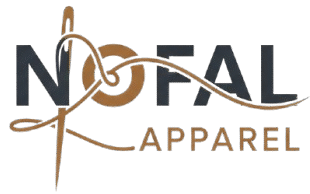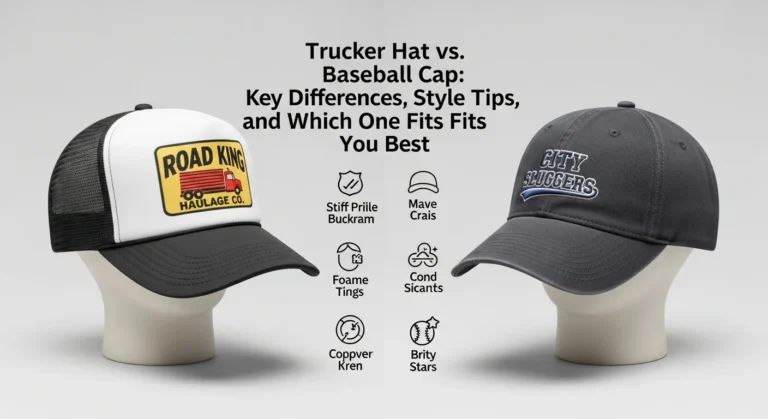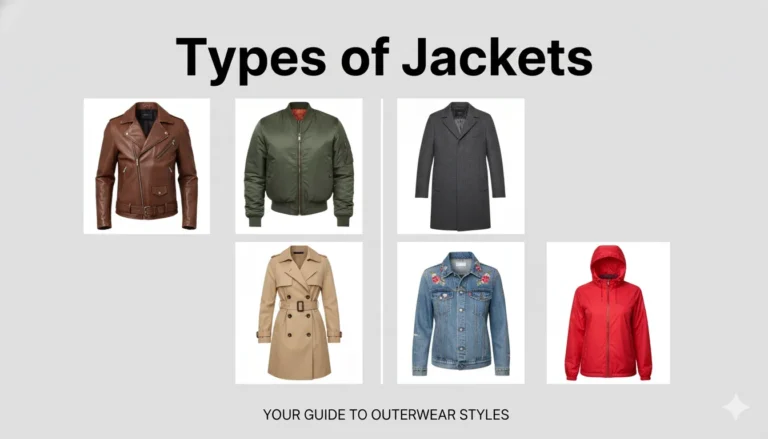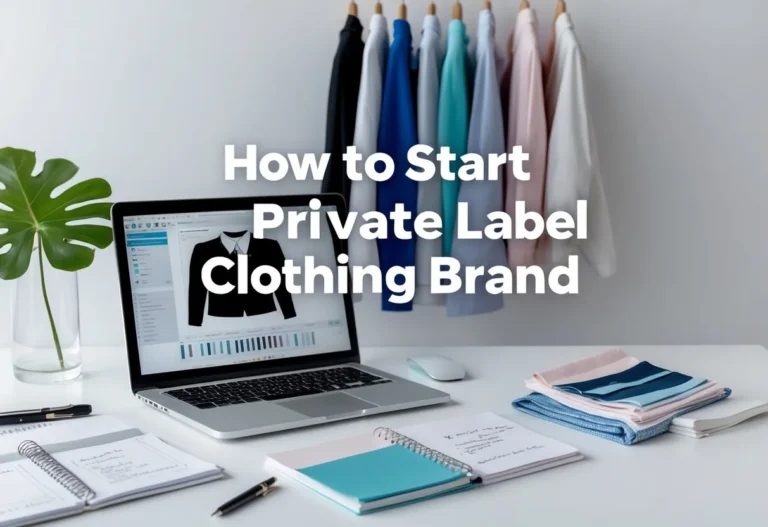Starting a private label clothing line is a practical way to launch a fashion brand without the challenges of manufacturing from scratch. It involves selling pre-made garments customized with your own branding, which saves time and reduces upfront costs. This guide How to Start a Private Label Clothing Line lets entrepreneurs focus on design, branding, and marketing while relying on established manufacturers for production.

Success in this field depends on choosing the right products, understanding the target audience, and standing out with unique designs and quality. By defining a clear niche and working closely with reliable manufacturers, a private label brand can grow steadily in a competitive market.
Careful planning and consistent branding help create recognition and customer loyalty. Navigating these steps thoughtfully makes launching a private label clothing line both achievable and scalable.
Key Takeways
- Starting with private label saves time and money compared to custom manufacturing.
- Clear focus on niche and target customers improves market fit.
- Strong branding and quality ensure long-term business growth.
Understanding How to Start a Private Label Clothing Line

Starting a private label clothing brand means selling apparel made by another company but under your own name. This model allows for control over branding and marketing while the manufacturing is handled by experts. It also differs from similar concepts like white label apparel and offers distinct benefits for new clothing brands.
What Is Private Label Clothing
Private label clothing refers to garments made by a manufacturer but sold under a different brand’s name. The manufacturer produces the items based on certain specifications such as fabric, color, and style provided by the brand owner.
The clothing brand has control over the design and branding but does not directly handle production. This model helps entrepreneurs create a unique brand without investing in factory operations or design from scratch.
A private label fashion business lets owners focus on selling and marketing, while relying on manufacturers skilled in custom clothing manufacturing to produce quality apparel.
Private Label vs. White Label Apparel
Private label and white label apparel are often confused but have key differences. Private label clothing involves customizing products made by the manufacturer. Brands choose specific details like materials, fits, and designs to reflect their identity.
White label apparel, on the other hand, is ready-made and sold by many brands with little or no change. These products are generic and lack customization options.
| Feature | Private Label | White Label |
|---|---|---|
| Customization | High; tailored to brand needs | Low; standard, pre-made |
| Brand exclusivity | Usually exclusive to one brand | Used by multiple brands |
| Investment level | Higher, due to design input | Lower, as products are ready |
| Control over design | Strong | Minimal |
This distinction impacts how much control a brand has and the uniqueness of its clothing line.
Benefits of Starting How to Start a Private Label Clothing Line
Starting a private label clothing line offers several practical benefits. The initial costs are lower since brands avoid the high expenses of building a factory or designing products from scratch.
Brands can quickly scale by increasing orders with their manufacturer as demand grows. This flexibility supports growth without needing heavy investments in equipment or personnel.
Private label apparel allows brands to focus on building their identity, marketing strategies, and customer relationships rather than manufacturing headaches.
Additionally, manufacturers often handle quality control and logistics, reducing the risk of production errors and delays. This results in better product consistency and customer satisfaction for the clothing brand.
Market Research for How to Start a Private Label Clothing Line

Starting a private label clothing line begins with clear market insight. This involves examining the current industry, knowing who will buy the product, spotting important fashion patterns, and choosing a niche that is both unique and profitable.
Conducting Market Research
Market research is the foundation for any successful clothing brand. It helps identify what products are already sold and what gaps exist. Research should focus on competitors’ strengths and weaknesses, pricing strategies, and customer reviews.
Using online tools and surveys can provide direct feedback from potential buyers. It also involves checking sales data, social media trends, and fashion forums. This data guides decisions on product design and pricing, lowering risks of failure.
Identifying Your Target Audience
Defining the target audience makes product development focused and effective. It requires detailing demographics like age, gender, income, and lifestyle. For example, a brand might target young adults who prefer custom urban wear or eco-conscious consumers.
Knowing the audience’s buying habits and values helps tailor marketing messages and product features. This step ensures the clothing line appeals directly to those most likely to buy, improving sales and customer loyalty.
Analyzing Fashion Trends
Tracking fashion trends is critical to keeping the brand relevant. It involves studying runway shows, fashion blogs, and streetwear movements. Predicting which styles, colors, and materials will become popular can give a brand an edge.
Trends can be seasonal or long-term. A new brand should focus on sustainable and adaptable trends to avoid fast obsolescence. Combining trend analysis with customer preferences helps design garments that satisfy market demand without losing brand identity.
Selecting a Profitable Niche
Choosing the right niche narrows competition and highlights the brand’s unique value. This could be activewear, eco-friendly basics, or custom graphic tees. The niche should fill a specific market gap uncovered during research.
Profitability depends on demand, production costs, and pricing control. Low minimum order quantities offered by manufacturers support testing several niches without heavy upfront investment. A carefully chosen niche increases chances of building a loyal customer base and steady growth.
Creating a Business Plan and Setting Up Operations

Starting a private label clothing line requires a clear plan that covers finances, operations, and legal steps. Keeping track of costs and choosing the right business model are essential. It’s also important to understand the legal requirements that protect and support the brand’s growth.
Outlining Your Business Plan
A solid business plan acts as a roadmap for launching a private label brand. It should define the target market, product range, and brand positioning.
Key elements include:
- Market Research: Identify your audience and competitors.
- Product Strategy: Decide what types of clothing to offer.
- Sales Channels: Plan how to sell, usually through an ecommerce store or retail partners.
- Marketing Approach: Outline how to build brand awareness using social media, ads, or influencer partnerships.
- Goals and Metrics: Set clear targets for sales, growth, and profit margins.
The plan helps the fashion entrepreneur stay focused and guides decisions about sourcing, pricing, and scaling the business.
Calculating Startup Costs
Calculating startup costs is crucial before launching. These costs vary but typically include:
| Expense Category | Description |
|---|---|
| Product Sourcing | Minimum order quantities and samples from suppliers. |
| Branding | Logo design, packaging, and marketing materials. |
| Website Development | Setting up an ecommerce platform and payment systems. |
| Legal Fees | Trademark registration and contracts. |
| Inventory Storage | Warehousing or third-party logistics (3PL) costs. |
| Marketing | Advertising budget for launch and ongoing campaigns. |
Estimating these expenses helps create a realistic budget and determines how much funding is needed. It also informs pricing strategies to ensure profitable sales.
Choosing a Business Model for How to Start a Private Label Clothing Line
The choice of business model influences operations and growth. For private label clothing, typical models are:
- Direct-to-Consumer (DTC): Selling directly through an ecommerce store. This model offers control over branding and customer data but requires handling logistics.
- Wholesale: Selling in bulk to retailers. This can generate faster revenue but with lower profit margins.
- Dropshipping: Partnering with a supplier that ships products directly to customers. This lowers upfront costs but reduces control over quality and shipping times.
Choosing the right model depends on budget, expertise, and long-term goals. Many new fashion entrepreneurs start with DTC to build their brand identity.
Legal and Regulatory Considerations
Legal setup protects the business and avoids costly issues. Important steps include:
- Registering the Business: Choose the right legal structure (e.g., LLC, sole proprietorship) to define liability and tax status.
- Trademark Registration: Protect the brand name and logo to prevent unauthorized use.
- Product Compliance: Ensure clothing meets safety and labeling regulations in target markets.
- Contracts with Suppliers: Clear agreements should cover product specifications, delivery schedules, and quality standards.
- Tax and Customs: Understand import duties if using overseas suppliers to avoid surprises.
Consulting a legal expert is recommended to ensure compliance. These measures help build trust and credibility with customers and partners.
Building Your Brand Identity

A strong brand identity sets a private label clothing line apart in a crowded market. It connects the business with its audience through clear values, unique benefits, and consistent visual elements. These aspects work together to create a memorable and trustworthy clothing brand.
Defining Your Brand Values
Brand values form the foundation of a clothing brand’s identity. They guide decisions and shape how the brand communicates with customers. Values may focus on quality, sustainability, affordability, or innovation, among other principles.
Choosing clear and authentic values helps the brand build trust and loyalty. For example, a brand committed to eco-friendly materials appeals to environmentally conscious shoppers. Consistently reflecting these values in products, messages, and actions keeps the brand genuine and relatable.
Creating a Unique Selling Proposition
The unique selling proposition (USP) explains what makes a clothing brand different from competitors. It highlights the special features or benefits that customers cannot get elsewhere.
A strong USP can focus on price, design, material quality, or customer experience. For instance, a private label may offer customizable activewear tailored for specific fitness needs. This clear differentiation helps the brand attract and retain target customers who value that uniqueness.
Developing Brand Visuals and Assets
Visuals communicate the brand identity instantly through logos, colors, typography, and packaging. These elements must be consistent across all touchpoints to create a professional and cohesive look.
A logo should be simple and memorable, reflecting the brand’s style and values. The color palette and fonts should match the brand’s tone, whether it is bold, minimalist, or playful. Packaging design also influences how customers perceive the brand’s quality and commitment.
Together, these assets shape the customer’s first impression and ongoing connection with the clothing brand.
Designing and Developing How to Start a Private Label Clothing Line

Designing and developing a clothing line involves turning ideas into detailed plans and selecting the right materials. This process ensures that the final products match the brand’s style and quality standards. Precision and clear communication with manufacturers are essential to bring designs to life.
Clothing Design and Product Development
The design phase starts with creating sketches that reflect the style and function of the clothing. Whether designing casual wear like hoodies, pants, or underwear, each piece should have a clear look and purpose.
Product development then refines these sketches, deciding on fit, fabric choices, and construction methods. Designers test prototypes to find the right balance between comfort and durability. This phase often requires multiple revisions to meet both customer expectations and manufacturing limits.
Creating Tech Packs
Tech packs are detailed documents that explain every element of the clothing design to the manufacturer. They include measurements, stitching instructions, materials, colors, and any special features or customization required.
A well-prepared tech pack reduces errors and speeds up production. It acts as a blueprint, ensuring that every garment, from a simple t-shirt to a complex hoodie, is made exactly as envisioned. Consistency is key, so updates to tech packs are necessary whenever changes are made.
Sourcing Materials and Fabrics
Choosing the right fabrics is crucial for quality and customer satisfaction. For casual wear, blends like poly-cotton are popular because they mix comfort with durability. Light cotton works well for underwear or shirts, while heavyweight fleece suits hoodies and jackets.
Fabric thickness, measured in GSM (grams per square meter), helps determine weight and feel. Lower GSM fabrics are lighter, suited for warm weather or layering, while higher GSM offers warmth and structure. Sourcing from reliable suppliers guarantees fabric quality and availability for ongoing production.
Selecting and Working With Private Label Manufacturers

Choosing the right private label clothing manufacturer sets the foundation for a successful clothing line. Important factors include how well the manufacturer meets product needs, order requirements, and quality expectations. Clear communication and precise agreements help avoid problems and keep production on track.
Evaluating Private Label Clothing Manufacturers
Evaluating potential manufacturers starts with confirming their experience in making the specific clothing types needed. For example, a supplier specializing in activewear might not suit a luxury loungewear line. Checking references or reviews from other private label brands can reveal reliability and product quality.
Manufacturers should offer customization options like fabric choices, colors, sizing, and custom labels. It is essential to understand their production timelines and flexibility. Visiting the factory or requesting samples can provide insight into craftsmanship and materials used. Transparent communication about costs and lead times is key.
Negotiating Minimum Order Quantities
Minimum order quantities (MOQs) are standard requirements for private label clothing manufacturers. They specify the smallest batch size to begin production. Negotiating MOQs helps balance startup budgets with supplier demands.
Manufacturers may set MOQs to cover their costs, but some flexibility often exists, especially when starting out or testing products. Entrepreneurs should request MOQs for different styles or colors separately. It is wise to clarify if future reorders have different minimums. Lower MOQs may come at a higher per-unit cost, so budgeting accordingly is important.
Ensuring Quality Control and Assurance
Quality control starts early with sample inspections before full production. It includes verifying fabric quality, stitching, sizing accuracy, and custom label placement. A private label supplier should allow detailed checks and respond quickly to any defects found.
Ongoing quality assurance involves random inspections during production runs to catch issues early. Clear guidelines on product specifications and tolerances must be agreed upon. Documenting quality standards in the contract protects both parties and helps maintain product consistency over time.
Launching and Growing Your Private Label Brand

Launching a private label clothing line requires careful planning in how products are presented, sold, and promoted. Growth depends on strong branding, reliable online sales channels, effective marketing, and knowing when and how to expand. Attention to each step increases chances for a lasting, successful business.
Packaging and Branding Your Products
Packaging is often the first physical interaction customers have with a private label brand. It must reflect the brand’s identity and create a memorable experience. Choosing eco-friendly materials can appeal to conscious consumers.
Key elements to focus on:
- Custom labels or tags with the brand logo
- Branded tissue paper or boxes
- Clear, readable care instructions
- Secure packaging to protect the products
Consistent packaging strengthens brand recognition and builds trust. Small touches like thank-you notes or stickers can make customers feel valued. Packaging should also provide space for any legal labeling requirements such as fabric content or care instructions.
Building Your E-Commerce Presence
A strong e-commerce site is essential for selling a private label clothing line. Platforms like Shopify offer user-friendly tools to customize storefronts without deep technical skills. The site should be:
- Mobile-friendly
- Easy to navigate
- Fast-loading
Important features include product pages with clear images, detailed descriptions, size guides, and customer reviews. Integrating secure payment gateways helps build customer confidence.
Using apps for inventory management and order tracking streamlines operations. Offering multiple shipping options and clear return policies reduces buyer hesitation. Social proof through testimonials or ratings can increase conversions.
Digital Marketing and Email Marketing Strategies
Digital marketing drives traffic and sales for private label brands. Key tools include social media ads, SEO, and influencer partnerships to reach the right audience.
It’s important to create targeted campaigns focusing on the brand’s niche. For example, ads can highlight unique selling points like eco-friendly fabrics or custom designs.
Email marketing supports customer retention with personalized offers, product announcements, and follow-ups after purchases. Building a subscriber list through website signups or promotions helps create a loyal community.
A consistent posting schedule and engaging content increase brand visibility. Tracking metrics like click-through rates and conversions informs ongoing marketing improvements.
Scaling Your Clothing Line
Scaling a private label clothing brand means increasing production and expanding market reach without losing quality. This can involve:
- Introducing new product styles or categories
- Partnering with larger manufacturers for better cost efficiency
- Expanding to wholesale accounts or local boutiques
Data from sales and customer feedback guides which products to scale. Inventory management systems help avoid overstock or shortages.
Scaling also requires strengthening customer service and possibly hiring staff. Maintaining brand values and product quality during growth is crucial to long-term success.
Implementing Sustainable and Trend-Driven Practices

Starting a private label clothing line today means balancing eco-friendly production with fashion that catches attention. Smart choices in manufacturing, staying updated on trends, and using flexible production methods help brands meet customer expectations and reduce waste.
Adopting Sustainable Manufacturing
Sustainable manufacturing focuses on using materials and methods that lower environmental harm. Brands often choose organic cotton, recycled fabrics, or innovative fibers like Tencel to reduce use of pesticides and water. They also seek factories that use renewable energy and minimize waste.
Water-saving technologies and digital printing reduce chemical use and pollution. Ethical labor is part of this, ensuring fair wages and safe conditions for workers. Brands that monitor their supply chain closely improve transparency and can prove their eco-friendly claims. This builds trust with consumers focused on sustainability.
Staying Ahead of Fashion Trends
Keeping up with fashion trends helps private label brands stay competitive. This means regularly researching styles, colors, and fabrics that appeal to target customers.
A clear process for gathering trend data, such as following influencers, attending trade shows, and using fashion forecasting tools, is valuable. Brands should adapt quickly to new trends without overproducing, which can waste resources.
Mixing classic pieces with trend-driven items allows a brand to balance innovation with long-lasting appeal. This strategy supports sustainable growth by avoiding excess inventory.
Utilizing Print-on-Demand and Customization
Print-on-demand (POD) lets brands produce clothing only when an order is placed. This minimizes inventory and reduces unsold stock waste. POD also supports a wide range of design options, allowing rapid response to customer preferences.
Customization tools let shoppers personalize clothing with colors, styles, or graphics. This increases customer engagement and brand loyalty.
Combining POD and customization empowers brands to make unique, limited pieces while keeping production lean and eco-friendly. This is important for private labels aiming to reduce environmental impact while standing out in the market.
Frequently Asked Questions
Starting How to Start a Private Label Clothing Line requires clear steps in design, manufacturing, costs, branding, legal needs, and marketing. Each part is essential to build a strong and lasting apparel brand.
What are the initial steps to establish a private label clothing brand?
The first step is finding a niche based on style and customer needs. Next, the founder should develop a clear brand image including name, logo, and core values.
Creating a business plan and understanding legal requirements come early. Researching the target market and trends helps shape product choices.
How do you find and select a manufacturer for a private label clothing line?
A suitable manufacturer should offer low minimum order quantities (MOQ) to fit new business needs. It’s important they provide good communication and support through design and production stages.
Checking if they offer sampling services and trade insurance ensures security and quality control. The manufacturer should be reliable and flexible for future growth.
What are the cost considerations when starting a private label clothing line?
Initial costs include design, sourcing materials, and prototype samples. Manufacturing costs vary based on fabric choice, order size, and production complexity.
Additional expenses involve branding, packaging, marketing, legal fees, and shipping. Careful budgeting helps avoid unexpected financial issues.
How do you create a branding strategy for a private label clothing line?
The brand needs a strong story that connects with customers emotionally. This includes defining the brand’s moral values, style, and the solution it offers.
A consistent visual identity, including logo and packaging, supports the brand’s message. Marketing materials and social media content should reinforce this story.
What are the legal requirements for launching a private label clothing line?
Registering the business and obtaining necessary permits is critical. This may include a general business license and sales tax permit depending on the location.
Trademarking the brand name and logo protects intellectual property. Compliance with labeling laws about fabric content and care instructions is also required.
How can you market and sell your private label clothing line effectively?
Marketing involves building awareness through social media, influencer partnerships, and online ads. Selling can happen on e-commerce platforms, pop-up shops, or in stores.
Customer feedback and data help refine products and campaigns. Consistent communication with the audience builds trust and loyalty.






